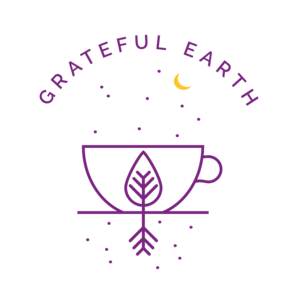Cordyceps Sinensis is a type of fungus.
Cordyceps Sinensis, or the caterpillar fungus, is also referred to as the winter worm or the caterpillar fungus. A parasitic fungus, rather than a mushroom, is commonly mistaken for one. One of the most feared creatures in the world, the "zombie caterpillar," may be found in China and Tibet. For many years, both traditional Chinese and Tibetan medicine have revered this herb as a powerful cure-all.
Zombies and caterpillars are two of the most common names given to this creature because of its appearance. The caterpillars of moths get infected by the fungus. A winter worm is a spore that has been attacked by a caterpillar in spring and has now grown into a worm, hence its common moniker of a winter worm. Magic herb fungus kills and mummifies caterpillars in spring before growing and creating a long, slender fruiting body. Hand-collected and dried, these are then utilized all over the world for medicinal purposes.
Cordyceps Sinensis has a variety of forms.
The market is flooded with more than 100 types that bear a striking resemblance to one another. Because of this, it's nearly impossible to tell them apart without years of experience and training. In addition, a large number of imitations are being sold in the market. As a result, significant care must be taken to guarantee that the products purchased are of the correct sort and genuine.
In which parts of the world do the Cordyceps Sinensis plant thrive?
The Tibetan plateau is the only place where this magical herb may be found. Tibet, India, Nepal, Bhutan, and Western China are all included in this region. Sichuan, Qinghai, and especially Tibet are the regions where it thrives the most. As a result of its rarity, this herb is greatly sought after all around the world.
How is Cordyceps Sinensis Harvested?
There is a period from April to June during which this magical herb can be harvested. It's gathered in an unusual manner. It is well known that the gatherers who reside in places with higher altitudes search for herbs while lying down in the grasses. Identifying and gathering these herbs requires a great deal of care and skill. As a result of the herb's small size, finding them is difficult. Many of these gatherers, on the other hand, are likely to be cheerful in their work because of the substantial profit they stand to make from it.
A tiny knife is used to remove the plant from the ground once it has been located. It is critical that the larvae are not harmed or destroyed, as their worth is entirely dependent on their preservation. To ensure that they are removing it with the utmost care, the gatherers will sometimes use a toothpick!
Advantages of Cordyceps Sinensis
Because of its numerous health benefits, it has long been used in Tibetan and Chinese medicine. Here are just a few examples of their uses:
- To improve one's strength and endurance
- To decrease the aging process
- To strengthen respiratory and cardiovascular systems
- To increase blood circulation; commonly used to treat patients with high blood pressure, blood clots, or high cholesterol
- To hasten recovery from a wide range of illnesses, weaknesses, and injuries
- To enhance sexual vigor (also known as libido)
- To aid in increased energy and stave off exhaustion
- To treat ailments like asthma and chronic bronchitis
- To strengthen the kidney's ability to remove toxins from the body
- to make oneself appear younger
Is Cordyceps Sinensis safe to eat?
If you're in good health, anything from 0.3 to 0.7 grams is safe to eat. Depending on the size, this could be anywhere from one to two pieces.
In Tibet, Cordyceps Sinensis is commonly used in a variety of foods and is said to taste like nuts. Some will eat the mushroom raw, but it's common for boiling water to be used to cook the mushroom and then consumed it. Others prefer to make it into tea for drinking. Alternatively, it can also be powdered and dissolved with milk or other liquids. Consult a doctor in your area before taking it for the best outcomes.
Cordyceps Sinensis is a popular supplement, but how do you tell the difference between genuine and fake?
Many people end up ill as a result of eating phony herbs; therefore this distinction between authentic and fake herbs is critical. Unfortunately, we do not recommend taking advice from anyone other than a trained and experienced mycologist. But for general curiosity, here are some things to check for when questioning what is real and what is fake:
Tenacity - Real ones are elastic, while phony ones are brittle.
Color - The real ones are tones of brown and natural colors, like tan and beige. Fake specimens typically have a yellow color and a murky appearance.
Odor - Unsurprisingly, fungi-like aromas are characteristic of authentic materials. The fakes do not have an odor that is characteristic of mushrooms and instead have a scent that is similar to either wood or sulfur.
Taste - authentic Cordyceps Sinensis has a mild sweetness, but the counterfeits typically have an umami flavor.
The best place to acquire Cordyceps Sinensis?
This potent herb can be purchased from a plethora of little shops lining the streets and plazas of Tibet. Asking around for businesses that offer genuine herbs is the greatest method to ensure you're getting the actual thing. You should avoid purchasing it online since there have been numerous false reports of counterfeit mushrooms. If you're going to buy herbs, it's a good idea to consult a mycologist as well as perform your own extensive research.
But when all else fails, a Tibetan native tour guide will gladly assist you in locating a real Cordyceps Sinensis throughout your Tibet visit if you so choose.





